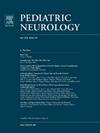Safety and Efficacy of Fingolimod and Ocrelizumab in Pediatric Patients With Multiple Sclerosis
IF 3.2
3区 医学
Q2 CLINICAL NEUROLOGY
引用次数: 0
Abstract
Background
Fingolimod and ocrelizumab are approved treatments for adults with multiple sclerosis (MS); however, only fingolimod is approved by the Food and Drug Administration for the treatment of pediatric MS. Currently, there are limited data for the safety and efficacy of ocrelizumab use in children.
Methods
This retrospective cohort study included patients with relapsing-remitting MS who started either ocrelizumab or fingolimod before age 18 years. Neuroimaging, electrocardiogram, laboratory evaluation, relapse history, and side effects were recorded at baseline and every six months.
Results
Thirty-six pediatric patients were included (fingolimod, n = 14; ocrelizumab, n = 22). Clinical relapses occurred in 14% of patients treated with fingolimod versus in none of the patients treated with ocrelizumab. Seventy-one percent of patients in the fingolimod group switched or discontinued therapy compared with 9% treated with ocrelizumab (P = 0.0001). From patients with greater than six months of treatment on the given therapy (fingolimod n = 10, ocrelizumab n = 17), 60% on fingolimod exhibited new/enlarged T2-hyperintense lesions on brain magnetic resonance imaging compared with 6% on ocrelizumab (P = 0.004). Of those treated with ocrelizumab, 10 of 22 (45%) had infusion reactions during their initial infusion. Reaction rates decreased to 20% with subsequent infusions.
Conclusions
Ocrelizumab is associated with fewer brain lesions, lower clinical relapse rates, and reduced discontinuation rates compared with fingolimod. Although both therapies have the potential for adverse effects, these are unlikely to prompt discontinuation of therapy in isolation. These findings highlight the benefits of ocrelizumab as a treatment option for children and youth living with MS.
芬戈莫德和奥克雷单抗在小儿多发性硬化症患者中的安全性和有效性。
背景:Fingolimod和ocrelizumab被批准用于成人多发性硬化症(MS)的治疗;然而,只有fingolimod被美国食品和药物管理局批准用于治疗儿童多发性硬化症。目前,在儿童中使用ocrelizumab的安全性和有效性数据有限。方法:这项回顾性队列研究纳入了18岁前开始使用奥克雷单抗或芬戈莫的复发-缓解型MS患者。神经影像学、心电图、实验室评估、复发史和副作用记录在基线和每6个月。结果:纳入36例儿科患者(fingolimod, n = 14;Ocrelizumab, n = 22)。接受芬戈莫德治疗的患者中有14%出现临床复发,而接受奥克雷单抗治疗的患者中没有出现临床复发。fingolimod组71%的患者切换或停止治疗,而ocrelizumab组为9% (P = 0.0001)。在接受给定治疗超过6个月的患者中(fingolimod n = 10, ocrelizumab n = 17), 60%的fingolimod组在脑磁共振成像上显示新的/增大的t2高强度病变,而ocrelizumab组为6% (P = 0.004)。在接受ocrelizumab治疗的患者中,22人中有10人(45%)在初始输注时发生输注反应。后续注射反应率降至20%。结论:与fingolimod相比,Ocrelizumab与更少的脑部病变、更低的临床复发率和更低的停药率相关。虽然这两种疗法都有潜在的副作用,但这些副作用不太可能促使单独停止治疗。这些发现强调了ocrelizumab作为儿童和青少年多发性硬化症患者的治疗选择的益处。
本文章由计算机程序翻译,如有差异,请以英文原文为准。
求助全文
约1分钟内获得全文
求助全文
来源期刊

Pediatric neurology
医学-临床神经学
CiteScore
4.80
自引率
2.60%
发文量
176
审稿时长
78 days
期刊介绍:
Pediatric Neurology publishes timely peer-reviewed clinical and research articles covering all aspects of the developing nervous system.
Pediatric Neurology features up-to-the-minute publication of the latest advances in the diagnosis, management, and treatment of pediatric neurologic disorders. The journal''s editor, E. Steve Roach, in conjunction with the team of Associate Editors, heads an internationally recognized editorial board, ensuring the most authoritative and extensive coverage of the field. Among the topics covered are: epilepsy, mitochondrial diseases, congenital malformations, chromosomopathies, peripheral neuropathies, perinatal and childhood stroke, cerebral palsy, as well as other diseases affecting the developing nervous system.
 求助内容:
求助内容: 应助结果提醒方式:
应助结果提醒方式:


